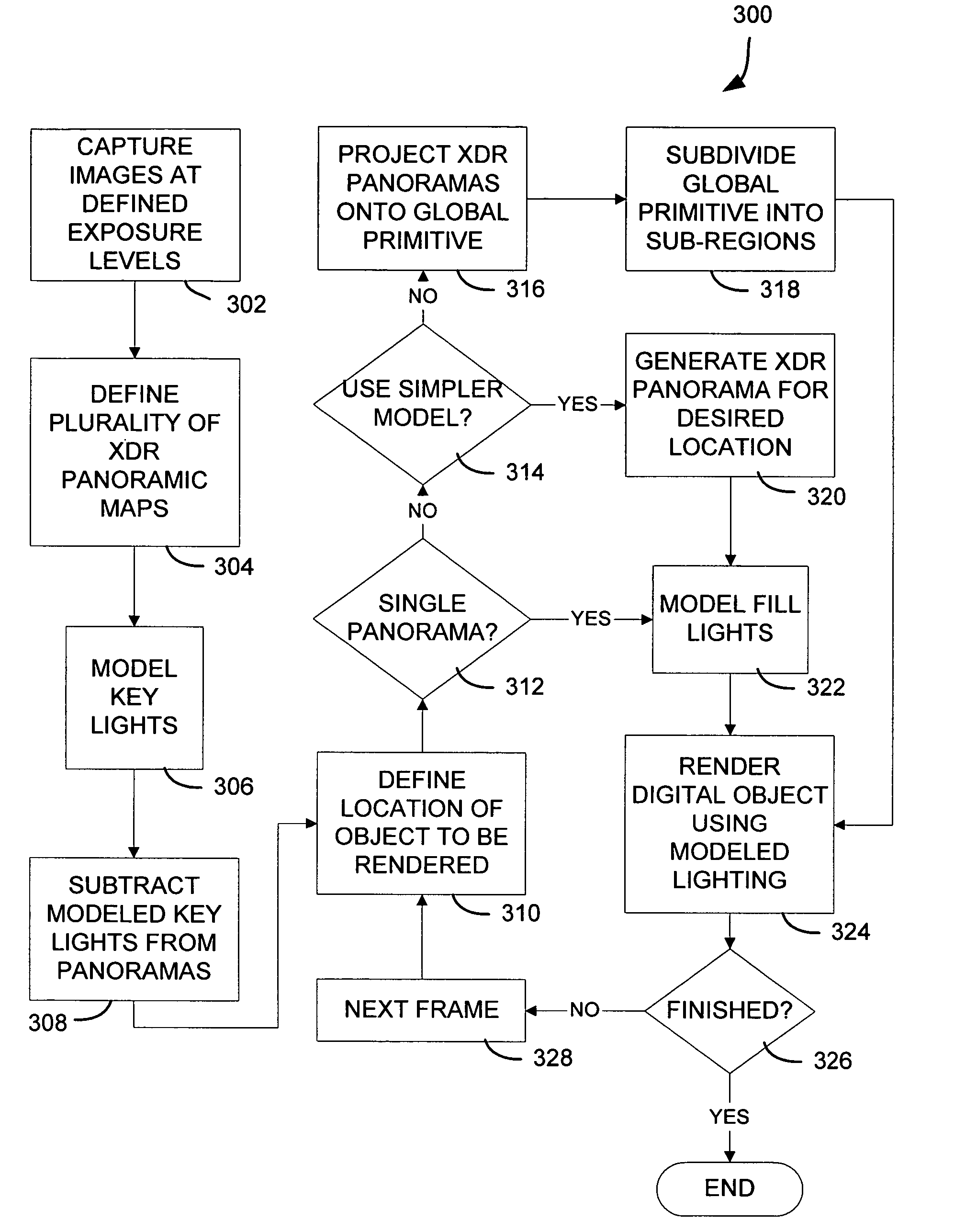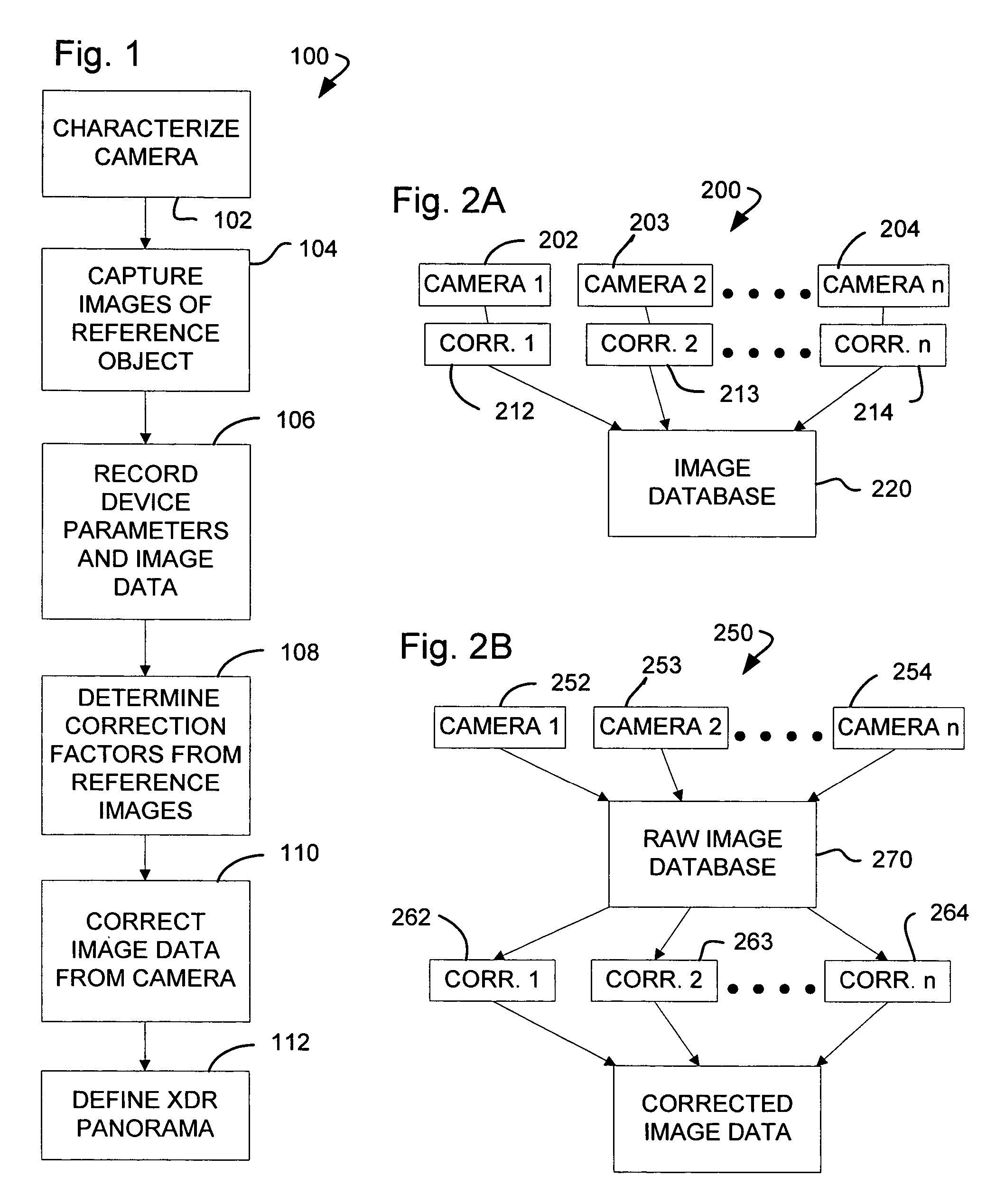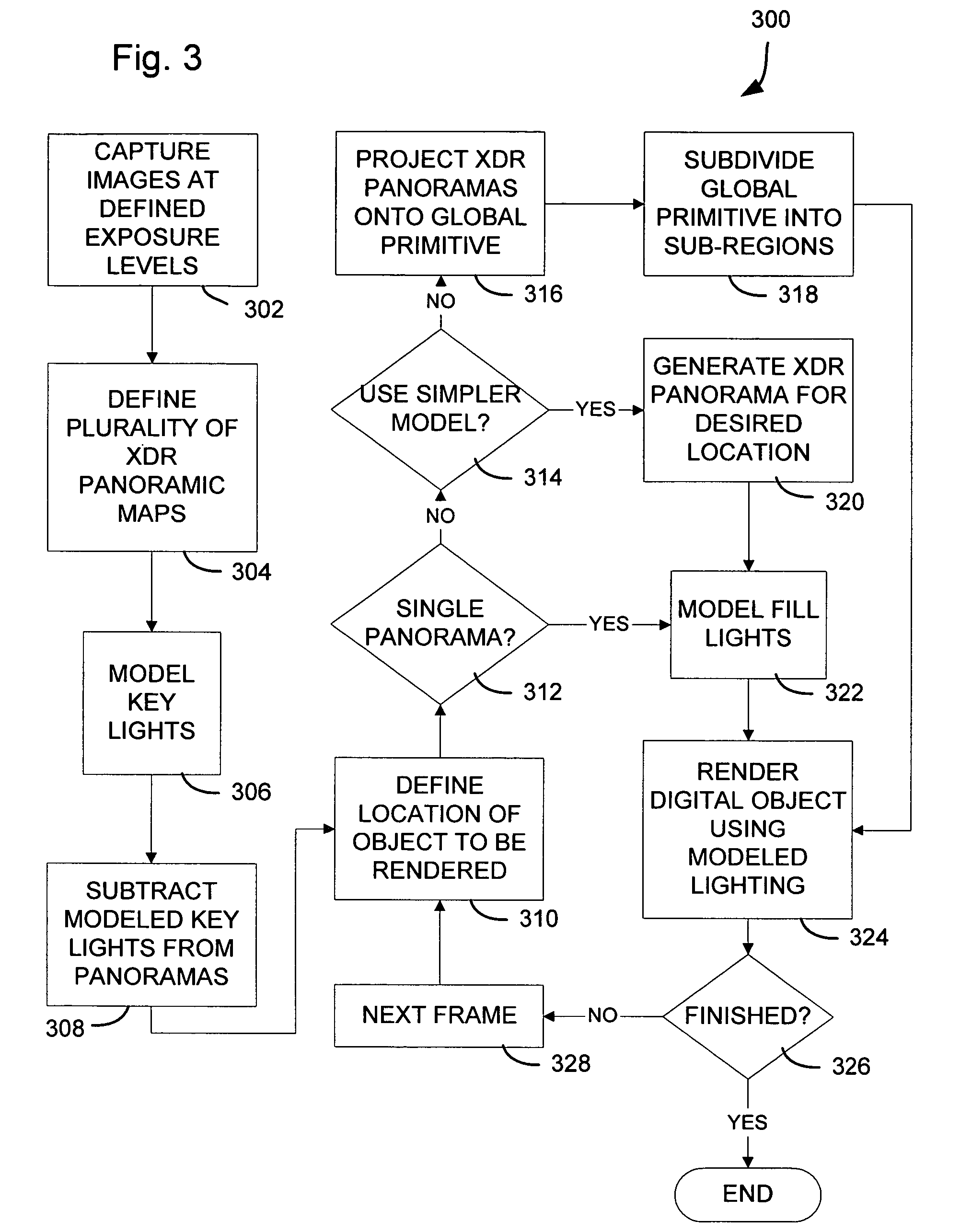Reality-based light environment for digital imaging in motion pictures
a technology of motion pictures and light environments, applied in the field of digital imaging, can solve the problems of increasing the cost or even the inability to achieve traditional special effects tools, the prior-art methods for combining digitally rendered objects with photographic data are subject to several limitations, and the limitations may become more apparent, so as to achieve accurate determination and high dynamic range
- Summary
- Abstract
- Description
- Claims
- Application Information
AI Technical Summary
Benefits of technology
Problems solved by technology
Method used
Image
Examples
Embodiment Construction
[0033]The present invention may be embodied in various different ways, depending on the desired results, resource constraints, and perhaps other factors. In the detailed description that follows, a limited number of exemplary embodiments are described, from which one of ordinary skill in the art may develop other embodiments of the invention. Like element numerals are used to denote like elements appearing in one or more of the figures.
[0034]According to an aspect of the invention, a motion picture project involving insertion of digitally rendered objects into real scenes draws data from images collected using different cameras, including both digital and film cameras. Different cameras usually record slightly different colors when exposed to the same scene. For example, different rolls of film, even from the same manufacturer, often will record slightly different colors. According to an aspect of the invention, the collected images are color and intensity corrected so that color di...
PUM
 Login to View More
Login to View More Abstract
Description
Claims
Application Information
 Login to View More
Login to View More - R&D
- Intellectual Property
- Life Sciences
- Materials
- Tech Scout
- Unparalleled Data Quality
- Higher Quality Content
- 60% Fewer Hallucinations
Browse by: Latest US Patents, China's latest patents, Technical Efficacy Thesaurus, Application Domain, Technology Topic, Popular Technical Reports.
© 2025 PatSnap. All rights reserved.Legal|Privacy policy|Modern Slavery Act Transparency Statement|Sitemap|About US| Contact US: help@patsnap.com



